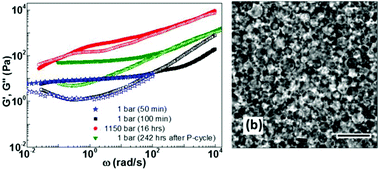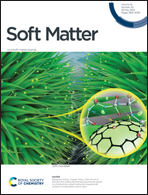A microstructural investigation of an industrial attractive gel at pressure and temperature†
Abstract
Oil-continuous drilling fluids used in the oil and gas industry are formulated to be pseudoplastic with a relatively weak yield stress. These fluids are required to maintain their properties over wide temperature and pressure ranges yet there are few methods that can sensitively study the inherent structure and mechanical properties in the fluids under such conditions. Here we study a model oil-continuous drilling fluid formulation as a function of both temperature (up to 153 °C) and pressure (up to 1330 bar) with Diffusive Wave Spectroscopy (DWS). The system comprises a colloidal gel network of clay particles and trapped emulsion droplets. As a function of temperature the system undergoes local structural changes reflected in the DWS dynamics which are also consistent with macroscopic rheological measurements. On cycling to high pressure the system exhibits similar structural and dynamic changes with a strong hysteresis. Although multiple scattering in multicomponent non-ergodic samples does not directly yield self diffusion probe dynamics, the use of microrheology analysis here appears to be in good agreement with direct rheological measurements of the sample linear viscoelasticity at ambient pressure. Thus DWS microrheology succesfully probes irreversible changes in the structure and the mechanical response of the drilling fluid formulation under a high pressure cycle.



 Please wait while we load your content...
Please wait while we load your content...